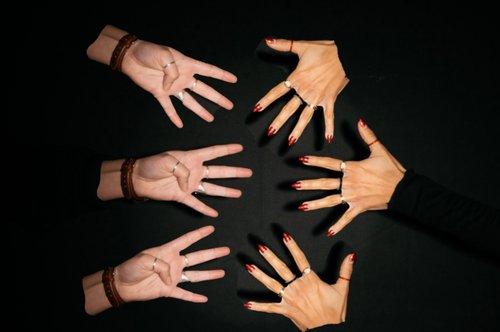Bystander Effect: why we are silent towards harassment even in open-plan offices
Sep 27, 2021
5 mins


Occupational psychologist, teacher at the IAE (Lyon School Of Management) and speaker.
SOCIAL SPACE: social psychology is the study of individuals and their emotions in society. It looks at how and why people change the way they behave in the presence of others. So what about the way they behave in the workplace? Welcome to the Jungle’s expert, the occupational psychologist Christophe Nguyen, applies his background in social psychology to the world of business. His first article examines the “bystander effect”. Otherwise known as “bystander apathy”, it describes the tendency of individuals in emergency situations to avoid getting involved when there are others present who could help instead.
The case: under-reported workplace harassment and bullying
“I met an employee named Elodie who had recently attempted suicide after a long period of workplace bullying from her manager. A few years before that, she had joined a team whose manager was known to be particularly challenging. Every Monday morning, he’d go through the files of each team member. There were 12 of them and Elodie was the only woman. And every Monday morning, he’d put her down. After asking her to work harder, he’d always finish by calling her ‘crap’ or ‘not up to scratch’ in front of her colleagues. One Monday morning six months later, she had a panic attack when she was too late to make it to the meeting room on time. She was put on leave for several months before being assigned to a new team. After a few years, she found out that she was being sent back to her old manager’s department after a restructuring decision by HQ. That same evening, Elodie sent emails to everyone at the company and she attempted suicide.
During our interview, Elodie said that her colleagues’ indifference was worse than the incessant denigration at the time. Not a single person reacted to the verbal abuse, and no one ever came to tell her that what she was going through was not normal. Without knowing it, Elodie was describing what we call “the bystander effect” in social psychology. In other words, the more people present, the less likely an individual is to intervene.”
— Christophe Nguyen
The experience: the bystander effect
The bystander effect was first theorized in the 1960s following the brutal assault and murder of Kitty Genovese, a young woman living in New York. The investigation uncovered more than 30 visual or auditory witnesses, none of whom intervened or called the authorities.
Several authors (Brewster & Tucker, 2016; Peggy Chekroun, 2008 have tried to identify the factors underlying this phenomenon and the best ways to counteract them. For example, Chekroun cited the 1968 Darley and Latané experiment, which observed the reactions of different groups of participants to a staged epileptic seizure. The findings were pretty clear. Witnesses who thought they were alone would intervene in 85% of cases. If one other person was present, the figure fell to 62%. And with four other witnesses, people would intervene in only 31% of cases.
Explanatory criteria
The diffusion of responsibility. When a witness is surrounded by others, that individual thinks someone else could easily take their place. They also tell themselves that if they don’t act, or the group fails to act collectively, then they are not directly at fault. It’s the familiar excuse of “I’m not responsible because there were lots of us”. In contrast, an isolated witness feels responsible for the situation and is, therefore, more likely to take action.
The perception of danger. When someone is in peril, the greater the perceived danger, the more willing a witness is to intervene. But if there is any ambiguity about the perceived danger, the witness will take time to think about whether or not to act. The problem is that during this time, the other witnesses have the same reaction, which creates a vicious circle of inaction where no one steps in.
Feelings of competence. The bystander effect is reduced depending on how competent a witness feels. For example, if you’re a medical doctor or trained in first aid, there is a good chance that you’ll act fast to help someone experiencing an epileptic seizure. However, a lack of medical training does not prevent an individual from inquiring about the victim’s condition and calling the emergency services for assistance.
The relationship between witnesses. When people know each other well and have good relationships, witness interventions are more frequent and effective than they would be with a group of strangers. That’s because witnesses are less inclined to worry that their actions may be judged negatively by others. People with a social connection tend to fear ridicule less than when they feel the situation is none of their business.
How to avoid the bystander effect in your company
The office, like any other space, can be a venue for abuse where the bystander effect holds sway, as Elodie’s case shows. As such, programs aimed at preventing workplace bullying and harassment involve a number of key measures.
Workplace harassment and bullying training
For a situation to come across as unambiguously dangerous for the victim, every member of an organization must be on the same page about this issue. Through dedicated training events, employees and managers must learn that denigrating or discriminatory comments, such as racist or sexist language, must never be downplayed. Behavior that some might see as “innocuous” or simply “unkind” can have a long-term impact on the victim’s health. Victims of workplace harassment and bullying can suffer severe psychosocial issues, including PTSD, anxiety, depression, and attempted suicide. During training sessions, it’s also important to define what constitutes workplace harassment and remind participants of the relevant employment and labor laws. This approach demonstrates how preventive action is better than trying to deal with a situation that has been festering for months.
However, keep in mind that experts recommend the concepts delivered in this training should be successfully integrated into the company culture.
Clearly defined roles
In addition to training harassment representatives within various teams and ensuring support from HR, employees must be clear about what is required of them. Each individual must understand that they play a role in maintaining a healthy work environment. In other words, it is everyone’s business. Collective vigilance also benefits mental wellbeing at work.
Greater diversity and inclusion
In order to promote solidarity between employees, regardless of their gender, ethnicity, profession, or position in the hierarchy, the company must also be clear about its diversity and inclusion values. Being open to diverse profiles and mixed teams – an approach that fosters bonds between employees – has to be a priority in the long term. For example, Elodie’s situation arose from the fact that she was not in the boys’ club and, as the only woman on the team, she had not been given a chance to fit in.
A hardline approach from management
To prevent workplace harassment, companies must be proactive and uncompromising, maintaining their core values. Warning procedures should be set up and, when a case is suspected, investigations carried out to clarify the abuse claims so that preventative measures can be put in place. By doing this, companies can remind employees that violence is a serious matter requiring action and that they must avoid becoming passive bystanders.
Elodie’s experience has stayed with me in my career as a consultant. I remember when she confided in me: “The fact that others looked away while I was being humiliated in meetings made me think I was the problem. It was like I deserved what was happening to me because I was the only one who was being publicly denigrated, and that was ‘normal’ because I was ‘rubbish’. That’s why I fell into a deep depression.” It’s not about blaming the so-called “failure to assist a person in danger”. It’s about the detrimental effect that apathy and a lack of social support have on mental health at work—and on running a successful business.
Translated by: Andrea Schwam
Photo: Welcome to the Jungle
Follow Welcome to the Jungle on Facebook, LinkedIn, and Instagram, and subscribe to our newsletter to get our latest articles every day!

More inspiration: Christophe Nguyen
Occupational psychologist, teacher at the IAE (Lyon School Of Management) and speaker.

Stereotyping: when sexism hinders job performance
Gender stereotypes are common in society, especially in the workplace. What exactly are they and how do they affect our performance at work?
Aug 16, 2022

The art of creating psychological well-being at work
We tend to blame our job-related stress on long hours and heavy workloads, but research suggests other factors play a larger role...
Jun 22, 2022

The broaden & build effect: How going back to work creates positive emotions
The more positive we feel at work, the better we work, the more productive we are and the more we want to be at the office. How does all this work?
Oct 25, 2021

How auto unions are advancing the idea of a shorter working week for all
As support for the 4-day workweek keeps gaining steam, the industry that ushered in the 5-day workweek is still at the forefront
Nov 27, 2023

“Many American workers and families break even at best.”
An economics reporter breaks down the complex landscape of today's economy.
Nov 23, 2023
The newsletter that does the job
Want to keep up with the latest articles? Twice a week you can receive stories, jobs, and tips in your inbox.

Looking for your next job?
Over 200,000 people have found a job with Welcome to the Jungle.
Explore jobs